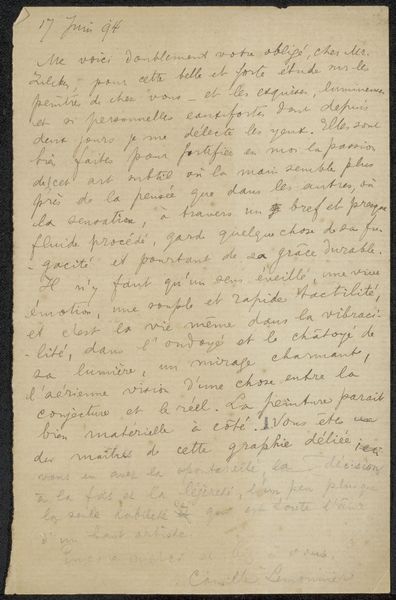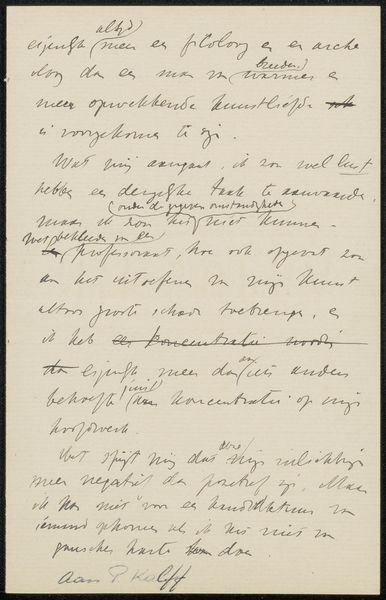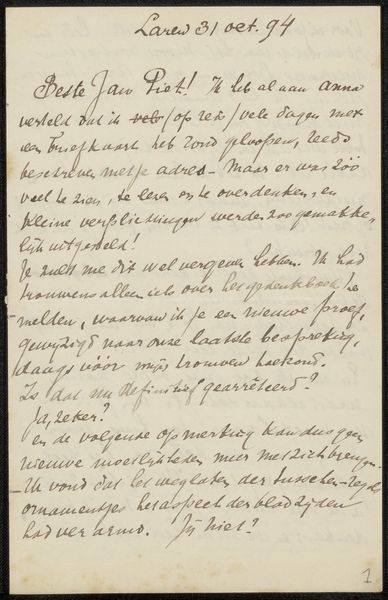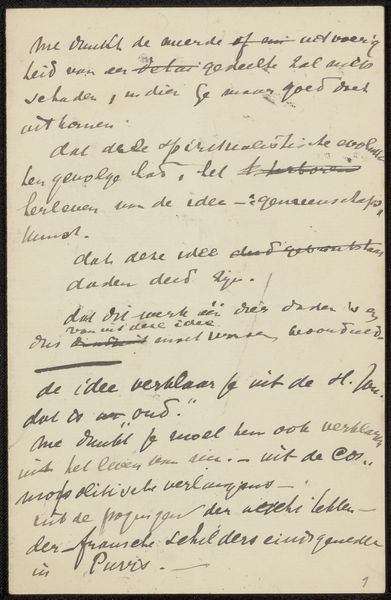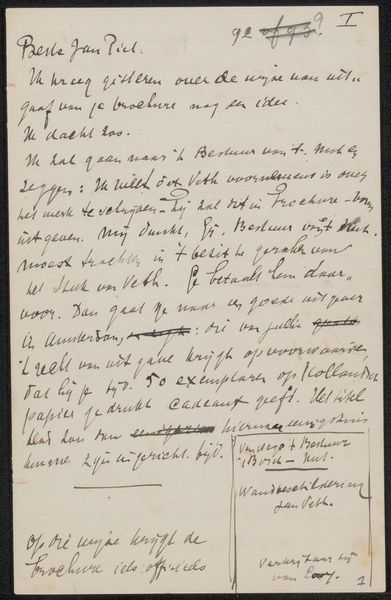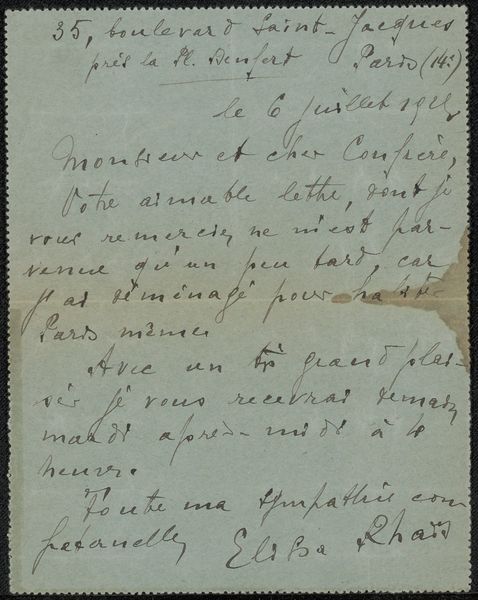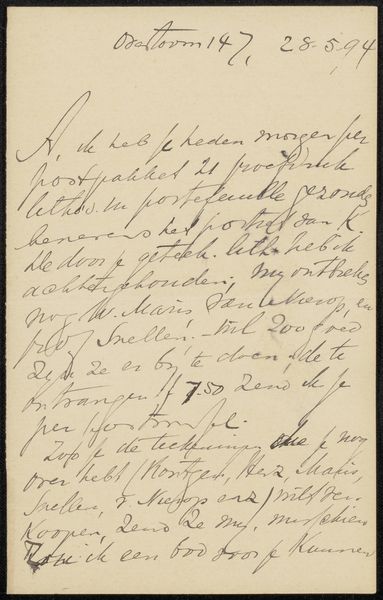
drawing, paper, ink
#
drawing
#
dutch-golden-age
#
paper
#
ink
#
calligraphy
Copyright: Rijks Museum: Open Domain
Editor: This intriguing piece, "Handschrift aan Jan Veth," dating from 1874 to 1925, is a drawing in ink on paper by Antoon Derkinderen. It almost looks like a historical document. How would you interpret this piece as a historian? Curator: It presents itself, at first glance, as a personal letter or perhaps a draft agreement. I find myself pondering the sociopolitical context surrounding artistic patronage in that era. Who was Jan Veth, and what role did such correspondence play in the art world of the time? Editor: It mentions sums of money and seems to be referencing some sort of arrangement for a wall, or "wand." Curator: Precisely. This document becomes a lens through which we can examine the institutional support systems and economic realities that artists like Derkinderen navigated. What does this reveal about how commissions were secured and managed? We should consider, too, what social networks were involved in these processes? Were there specific cultural institutions influencing the negotiation and production of public artworks? Editor: That's fascinating. I hadn't thought about it in terms of those power dynamics. Curator: Exactly! And understanding that gives us a far more nuanced appreciation for the art itself, doesn’t it? Editor: Yes, absolutely! It’s a good reminder that artworks exist within specific cultural and economic systems. I learned so much!
Comments
No comments
Be the first to comment and join the conversation on the ultimate creative platform.
